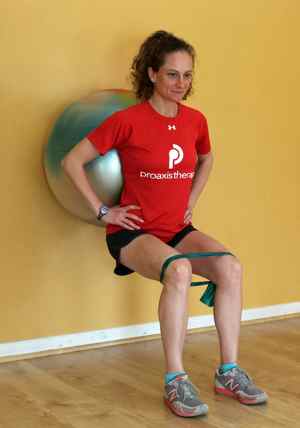Without fail, whenever I explain to people that I treat people with incontinence and pelvic pain issues they say, "You mean like doing Kegels?" The answer is usually no, at least initially. The idea that kegels are the ultimate answer to incontinence and pelvic pain issues is a dangerous misconception.
Most people are somewhat familiar with the Kegel pelvic floor exercise. A Kegel is an exercise where one voluntarily contracts the pelvic floor as if trying to stop the urine stream. If there is TRUE WEAKNESS in the pelvic floor, performing Kegel exercises is a place to start, but just because you have some urinary incontinence doesn't mean you have isolated weakness in your pelvic floor. Also, in my practice I have found that many people think they are performing Kegels and they are really contracting their abdominals, or their hip muscles, or simply holding their breath.
What I find most commonly when someone has pelvic pain or incontinence issues is that there is some spasm or areas of trigger points in muscles of the pelvic floor. This Mayo Clinic article does a great job of explaining this phenomenon, how it can present, and how physical therapy can help:
http://www.mayoclinicproceedings.org/article/S0025-6196%2811%2900024-3/fulltext
The Nonrelaxing Pelvic Floor
The pelvic floor could be in spasm for a number of reasons. This is often seen after childbirth with tearing or episiotomy. It's also seen after a pelvic or abdominal surgery or any medical issue with the pelvic organs. In response to these irritations or traumas the pelvic floor responds by tightening up, just like other muscles in the body respond to pain. Some issues that can result in pelvic floor spasm include fibroids, interstitial cystitis, kidney or bladder infections, constipation, endometriosis, pelvic inflammatory disease, and polycystic ovarian syndrome. Likewise, many pelvic or gynecological diagnoses are actually primarily or partly due to pelvic floor spasm. These include vaginismus, dyspareunia, vestibulitis, vulvodynia, coccygodyia or tailbone pain, and pudendal neuralgia. Incontinence and pelvic organ prolapse can occur as a result of the weakness associated with a spastic pelvic floor as well.
Unfortunately, the public and even the medical community is still quite unaware of this issue. As a result, the spasm or tightening in the pelvic floor often goes unaddressed, resulting in sometimes years of pain or incontinence. Patients often go through unnecessary surgeries with poor results. And more surgeries can result in even more pelvic floor tightening, ultimately worsening the pain or urinary incontinence.
The thing NOT to do in these situations is the first thing that comes to the mind of many medical professionals and much of the public - KEGELS. The pelvic floor is a muscle and behaves much like any other muscle in the body. When a muscle is in spasm it is weak. If you had a spasm in any other muscle that was causing you pain, what do you think would happen if you went around contracting that muscle several times a day? The spasm would get worse. The pain would get worse. And the weakness would get worse, which would result in any incontinence to worsen as well.
What a pelvic or women's health physical therapist would do is assess the pelvic floor muscle to check it's tone. If the tone is too high, or the muscle is in spasm, we would do gentle massage and instruct in relaxation techniques to first normalize the tone. We would also address any other muscle imbalances in the hips, legs, and trunk. Weakness and limited mobility in these related areas often results in overuse and spasm of the pelvic floor. In this way we are addressing the ultimate cause of the pain, not just the source of the pain. If this rings true for you or someone you know, please refer them to a women's health or pelvic physical therapist. Please feel free to contact me with any questions as well. I can't tell you how many patients I have seen who get relief quickly after finally having physical therapy for these issues after years of unnecessary pain and embarrassing incontinence.
Conley Physical Therapy in Decatur, Georgia can help!
www.conleyphysicaltherapy.com
info@conleyphysicaltherapy.com
I hope this post will help to bring awareness to a very common problem and that people will find the help they need!
Warmest Regards,
Kelly Conley, PT, DPT, OCS




